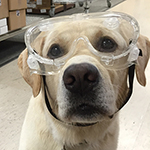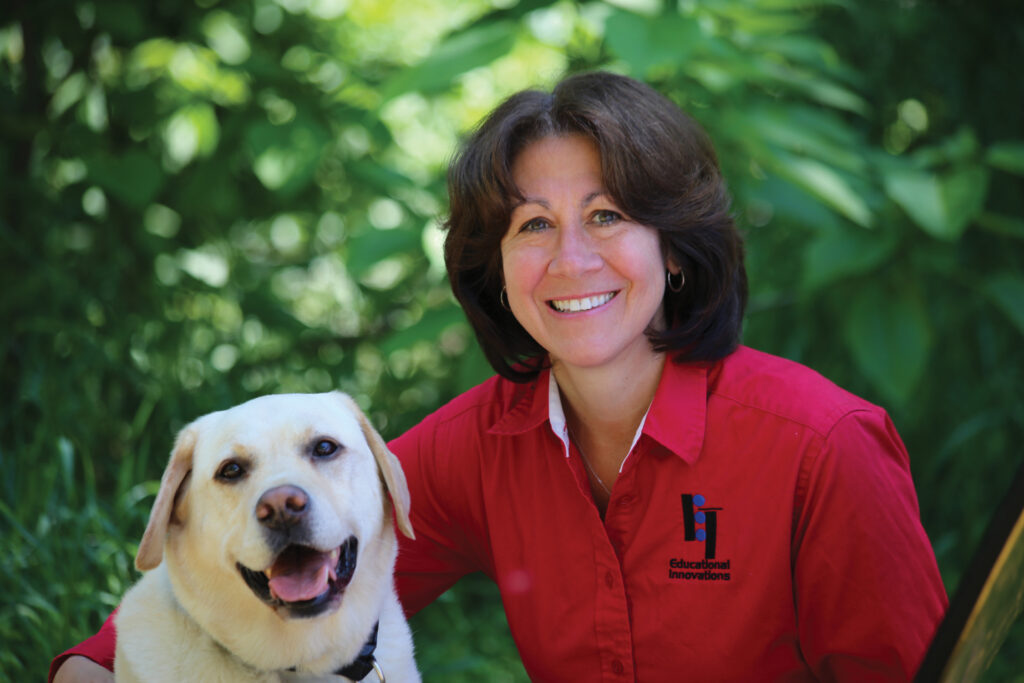 by Donna Giachetti
by Donna Giachetti
If you’ve read our CEO’s blog, “Why I LOVE Working at EI,” you already know that Educational Innovations is a VERY friendly workplace for dogs. We started with Brody, our official “EI Lab dog.” Next came Hunny, then Griffin, and last—but NEVER least—our frisky young Molly. These puppies are doted upon by all EI employees. There are always fresh carrots in the fridge and various sized Milk Bones on hand for our furry tribe.
Recently it occurred to me that, dogs (and other pets) are more than just our loyal companions. They’re also a great hook for engaging kids in science—especially the more reluctant students who may not be confident in their scientific inquiry skills. Why not combine your students’ love of their furry friends with their curiosity about the world around them?

I decided to do some research about dogs and science. Nothing too hardcore (i.e. their ancestry and evolution)… I looked for questions that even a middle school student would be able to use as a doorway to scientific exploration. And woof, did I hit the jackpot!
Dogs + Science = PAWesome Research!
Whether you’re looking for a science fair suggestion or a class-wide research project, here are some PAWesome ideas:

We’ve all heard the old wives’ claim that a dog’s mouth is cleaner than a human’s. But is it? Why not grab some Petri Dishes and test it out?
On a similar theme, I came upon a recent study that claims men’s beards have vastly more germs than dogs’ mouths. Yuk. But also cool. Can’t you imagine one of your students testing this hypothesis on Pop and Pup?

While we’re talking about dogs’ mouths… can dog saliva really kill bacteria better than our saliva? For that matter, can it kill bacteria at all?
What about color-blindness? Can dogs see colors? If so, do they have a preference?
Education.com provides a fully-developed process for exploring these questions.
And then there’s the question of left-or-right handedness. (Although in this case, it’s really a question of being left-pawed or right-pawed.) Kudos to Sciencing for their excellent science fair idea.

Do dogs tend to take on their owners’ personalities? Both Tami and Brody are pretty mellow people, so I’d believe it. And now there is some scientific evidence to confirm this theory.

And then there’s the gross factor…
Lastly, in the category of “more than I ever hoped to learn,” there’s this remarkable scientific fact from PBS: Researchers have found that dogs use Earth’s magnetic fields to align their bowel and bladder movements. Turns out they prefer to relieve themselves along a north-south axis. Who knew?!
I’m personally toying with the idea of borrowing one of our databots to see whether I can collect proof from my frequent walks with Griffin.

Citizen (Dog) Science Projects Galore!
In case you think I’m nuts, consider this article from Scientific American. There are literally dozens of public participation “citizen science” projects out there dedicated to learning more about dogs. How do people respond to dog barks? Do we disclose our deepest secrets more readily to our partners or our pets? Inquiring minds want to know.
As a final note, I should point out the (obvious) need to consider safety when it comes to any investigation that involves living things. Some science fairs may not allow the use of animals. In all cases, please make sure to remind your students that their furry friends are much, much more than “just” a science experiment. Absolutely no experiment should ever be performed that might endanger the pets – or their owners – in any way. But they probably already know that.


This entry was posted on Friday, January 31st, 2020 at 4:00 am and is filed under College level, Elementary level, experiments, High School level, Middle School level. You can follow any responses to this entry through the RSS 2.0 feed. You can leave a response, or trackback from your own site.